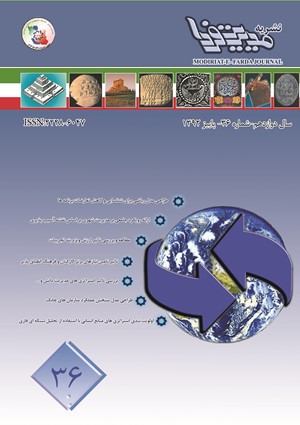-
-
List of Articles
-
Open Access Article
1 - A model for determination and reduction of conflicts among national plans based on the Islamic-Iranian advancement pattern
وحیدرضا سلامت -
Open Access Article
2 - A Comprehensive Approach to Urban Disaster Management Based on Vulnerability Map and Risk Zoning Case Study: Tehran Municipal District 1
وحید اسماعیلی کیاسج Kamran shahanaghi -
Open Access Article
3 - Studying the Impact of Brand Equity, Brand Experience, Brand Satisfaction and Brand Trust on Brand Loyalty (Case: ECCO Customers)
ابوالقاسم حکیمیپور حامد بزرگخو -
Open Access Article
4 - The impact of meeting employees’ high-order needs and adaptive culture On transformational leadership-organizational innovation relationship (Case study of high-tech private companies)
برزو فرهی بوزنجانی سیدمهدی حسینی سرخوش جمال حاجی شفیعی -
Open Access Article
5 - Effects of knowledge management strategy of employee empowerment and organizational agility
رضا سپهوند -
Open Access Article
6 - Designing an agile organization performance measurement model: aninterpretive structural modeling approach(ISM)
روح الله رازینی عادل آذر مهدی محمدی -
Open Access Article
7 - اولویت بندی استراتژیهای منابع انسانی با استفاده از تحلیل شبکه ای فازی (FAM) (مطالعه موردی ایران مرینوس)
نورمحمد قياسوند ناصر ميرسپاسی
-
The rights to this website are owned by the Raimag Press Management System.
Copyright © 2017-2026







